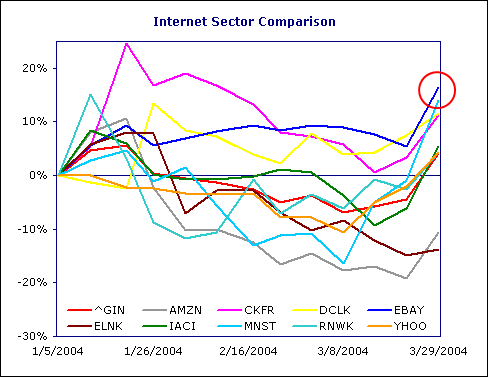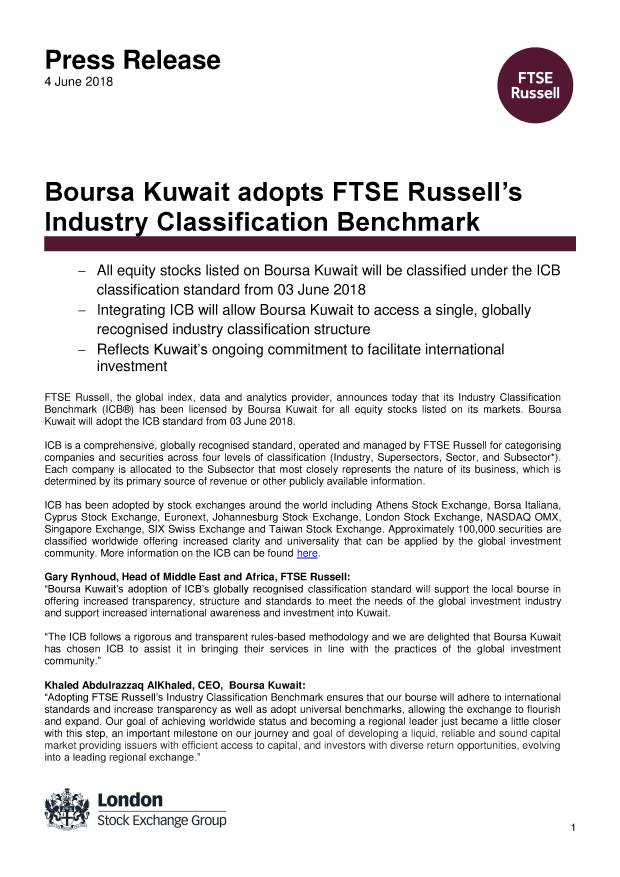
Such lines of credit are only extended by banks, financial institutions, and other licenced lenders to creditworthy customers. Creditworthiness is determined by the cash flow, repayment history of the customer, credit score, current position in the market of the customer, their business, or firm, and many other factors. There are different types of letters of credit that may be used, depending on the circumstances. If you need to obtain a letter of credit for a business transaction, your current bank may be the best place to begin your search. You may, however, need to expand the net wider to include larger banks if you maintain accounts at a smaller financial institution.
- Because a letter of credit is typically a negotiable instrument, the issuing bank pays the beneficiary or any bank nominated by the beneficiary.
- Our results show no differences among the self-reported knee instability groups in terms of medial laxity, quadriceps femoris muscle strength, or tibiofemoral joint alignment.
- Within 3 banking days the Receiving bank will answer with MT 199, stating their readiness to receive the BG/SBLC (Annex A1 ).
- This is where the Nominated Bank holds the documents, but sends a message to the Issuing Bank asking if discrepancies are acceptable.[10] This is more secure than sending documents in trust.
- The Standby Letter Of Credit (SBLC) is governed by a set of guidelines known as the Uniform Customs and Practice (UCP 600), which was first created in the 1930s by the International Chamber of Commerce (ICC).
That is to say, the bank is not responsible for investigating the underlying facts of each transaction, whether the goods are of the sufficient – and specified – quality or quantity. The letter of credit (LC) is the chain of LCs and bills confirming the deal made between buyer and seller. Once the contract is concluded, the buyer’s bank then supplies an LC to the seller. The seller then delivers the same LC to the carrier in exchange for goods and a bill of lading. Furthermore, the seller consigns the bill of lading to the seller’s bank, and the same is again sent back to the buyer’s bank and buyer for confirmation. Finally, the buyer’s bank and buyer, after acknowledging the bill of lading, hand it over to the carrier as a green flag for exporting the goods.
Typically, these are used for businesses that have an ongoing relationship, with the time limit of the arrangement usually spanning one year. The letter of undertaking is issued and is used for making transactions in the business or trade areas. Usually, a letter of undertaking for ensuring a credit line is supported by margin money or a credit limit sanctioned by a bank.
Legal & Privacy
The line of credit requires a fee for setting up, and the fee is paid to banks or financial institutions. The fees are required for registration, legal fees, arranging collateral if needed, performing some security checks, application fees, and so on. The fee may also be required to keep the credit facility open, which may be on a monthly, quarterly, or annual basis. Even when the money is not withdrawn, the annual fees have to be paid to keep the credit facility open, and such fees are called “unused line fees.” The Letter of Credit (LC), also known as a “Letter of Undertaking” (Lou) or “Banker Commercial Credit,” is a payment mechanism used for international trading for providing a guarantee from a creditworthy bank to an exporter of goods. These are only used for international financing when the dependability of the contract parties cannot be easily determined.

A letter of credit and a letter of undertaking are two methods to smoothen the transaction process between parties from two countries. A letter of credit can be understood as a means to provide a guarantee by a bank to the seller against a correct payment made in due time. The letter of credit emerged in the 1700s and later started flourishing in international trade, and slowly the concept of a letter of credit was also established in Europe in the 1800s. However, the name and functionality were different, and the offers were limited due to the non-uniformity of national laws.
LOOKING FOR A BANK GUARANTEE BG
The EXIM Letter of Credit policy can reduce a bank’s risks on confirmations and negotiations of irrevocable letters of credit issued by overseas financial institutions for the financing of U.S. exports. Within 3 banking days the Receiving bank will answer with MT 199, stating their readiness to receive the BG/SBLC (Annex A1 ). The Receiver will deliver a copy of the MT 199 SWIFT answer from the bank to the Provider ́s email address, listed on first page of this DOA, within 1 banking day after issuance.

If a letter of credit is transferable, the beneficiary may assign another entity, such as a corporate parent or a third party, the right to draw. Buyers of major purchases may need a letter of credit to assure the seller that the payment will be made. A bank issues a letter of credit to guarantee the payment to the seller, essentially taking responsibility that the seller will be paid. A buyer must prove to the bank that they have enough assets or a sufficient line of credit to pay before the bank will guarantee the payment to the seller. Due to the nature of international dealings, including factors such as distance, differing laws in each country, and difficulty in knowing each party personally, the use of letters of credit has become a very important aspect of international trade. However, whilst the details of the letter of credit can be understood with some flexibility the banks must adhere to the “principle of strict compliance” when determining whether the documents presented are those specified in the letter of credit.
Main Difference between Letter of Credit and Line of Credit in Points
We do not know whether the disease course of idiopathic (or primary) OA differs from that of secondary OA, so we excluded those individuals who reported a history of a possible ligament injury in order to ensure a more homogeneous sample. Idiopathic knee OA is more prevalent in women49; however, this was not reflected in the distribution of men and women in our sample. Our inclusion of individuals with only medial knee OA may have altered the expected distribution of male and difference between lou and lc female participants. Although the exact nature of self-reported knee instability in this patient population is unknown, we chose to exclude potential participants with patellofemoral joint disease in order to limit the possibility of instability arising from the patellofemoral joint. Despite the homogeneity of our sample, these findings may provide insight into the influence of self-reported knee instability for individuals with knee OA in other or multiple compartments.
- Among the various forms of letters of credit are a revolving letter of credit, a commercial letter of credit, and a confirmed letter of credit.
- Hence, two banks are involved, who would have an underwriter if the other party performed any malicious act such as not paying enough money, not having proper documents set for performing the contract, having invalid papers, and so on.
- The policy may be issued to any bank doing business in the United States in accordance with applicable federal or state banking laws and regulations.
- Refusal cannot depend on anything other than reasonable examination of the documents themselves.
- The name of the amount credited to the Bankers’ account back home is called the ‘Nostro Account,’ and the customer has the freedom to choose the recipient to whom the payment must be made.
Society for Worldwide Interbank Financial Telecommunication (SWIFT) is a Brussels, Belgium based organization who develops some guidelines for worldwide financial institutions. Banks or financial institutions are following that guidelines & standard for international financial transaction & documentation. So here I am trying to make you understand the SWIFT Standard MT700, which commonly used in making of Letter of Credit (LC). The types of letters of credit include a commercial letter of credit, a revolving letter of credit, a traveler’s letter of credit, and a confirmed letter of credit.
What is Letter of Credit?
Provider ́s bank will issue MT199 with the Verbiage as per Annex A to the Receiver’ s Bank Coordinates stated in this agreement, within 7 banking days after signing this Agreement. The Provider will deliver a copy of the MT 199 SWIFT bank message to the Receiver ́s email address, listed on first page of this DOA, within 1 banking day after issuance. The bank is obligated to make payment if the documents presented comply with the terms of contract. Though, the SBLC are considered very versatile and can be used with modifications to suit the interests and requirements of the buyers and sellers.
NDSU Wrestling Adds Five to Signee Class – NDSU – NDSU Bison Athletics
NDSU Wrestling Adds Five to Signee Class – NDSU.
Posted: Thu, 10 Nov 2022 08:00:00 GMT [source]
However, like anything else related to banking, trade, and business there are some pros and cons to acknowledge. Similar to other Financial law instruments, a Letter of Credit utilises several legal concepts to achieve the economic effect of shifting the legal exposure from the seller to the buyer. The policies behind adopting this principle of abstraction are purely commercial. Whilst the bank is under an obligation to identify that the correct documents exist, they are not expected to examine whether the documents themselves are valid.
Partial Confirmation for Letters of Credit?
The collective findings signify the importance of assessing and addressing self-reported knee instability in people with knee OA in order to maximize functional outcomes. Felson et al26 recommended that knee buckling be included in the list of common symptoms in people with knee problems or OA in medical and rheumatology textbooks. Often in international trade, a letter of credit is used to signify that a payment will be made to the seller on time, and in full, as guaranteed by a bank or financial institution. After sending a letter of credit, the bank will charge a fee, typically a percentage of the letter of credit, in addition to requiring collateral from the buyer. Among the various forms of letters of credit are a revolving letter of credit, a commercial letter of credit, and a confirmed letter of credit. As a result, it is the issuing bank who bears the risk that is linked with non-payment of the buyer.
The first wave of COVID-19 and mental distress of physician … – Human Resources for Health
The first wave of COVID-19 and mental distress of physician ….
Posted: Tue, 14 Feb 2023 08:00:00 GMT [source]
Participants stood barefoot, with the knees as straight as possible, and bearing weight on both lower extremities. Alignment was measured as the angle formed by the mechanical axis of the femur and of the tibia38–40 (Fig. 1). The mechanical axes of the femur and tibia were defined from lines connecting the center of the femoral head to the knee center and connecting the center of the talus to the knee center, respectively (Fig. 1).
Hence, two banks are involved, who would have an underwriter if the other party performed any malicious act such as not paying enough money, not having proper documents set for performing the contract, having invalid papers, and so on. Non-customary letter of credit structures such as those that are revocable, back to back, red clause, or conditional, are not presently accommodated under the coverage. This policy affords commercial and political coverage against the failure of an overseas financial institution (issuing bank), sovereign or private, to make payment or reimbursement to the insured bank on an irrevocable letter of credit. Coverage is also provided for the insured bank’s refinancing of payments under a sight irrevocable letter of credit of the issuing bank.

Thus, the seller relies on the credit risk of the bank, rather than the buyer, to receive payment. In the biomedical literature, the term “instability” often is used interchangeably with the term “laxity”; however, their meanings are not the same. Laxity represents a clinical sign that describes the condition of passive joint structures43 and is assessed in a static position using an arthrometer or stress device. A positive finding of increased knee laxity leads many clinicians to presume functional instability; however, prior to this study, this relationship had not been investigated in people with knee OA.

